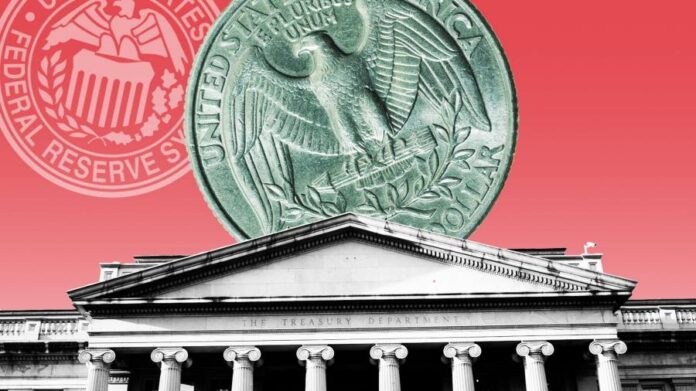The writer is an FT contributing editor
This week the US is again negotiating with itself to make sure the federal government can continue borrowing. The stakes are familiar. And yet this time there seems to be more concern that the dollar itself is at risk — that everyone else, long frustrated with the US currency, might take the chance to stop using it.
The problem with that argument is that there is no such thing as the dollar. There are many different kinds of dollars, each with its own qualities. No monetary regime lasts forever. But monetary regimes aren’t collective delusions, either. Dollars will not all suddenly blow away like smoke if Argentina starts pricing soyabeans in renminbi. Each kind of dollar has its own value, and we should be precise about which ones are in danger.
Normally when we talk about a currency we actually mean bank deposits. Dollar strength is a measure of the desire among currency traders to swap deposits in some other country for deposits in the US. The Federal Deposit Insurance Corporation has made it clear through repeated crises that it will not let any deposits fail, period.
There is no other currency with anything like the FDIC’s explicit guarantee of $250,000 of deposits, or its implicit guarantee of evidently pretty much anything. Eurozone bank deposits, for example, are backed only by national governments, and only to €100,000. You may not like American bank dollars, but there is no currency that might conceivably replace them.
There are also eurodollars — dollar-denominated deposits at foreign banks. These, too, enjoy an almost explicit guarantee from the Federal Reserve, through agreements to temporarily swap currencies with foreign central banks in a crisis. No other central bank offers anything remotely comparable to the assurance of these swaps. You might not like this system, but again, it’s not clear what could replace it.
In financial markets, treasuries function as dollars — they aren’t just denominated in dollars, they are dollars. If the federal government starts to miss payments, the value of successive runs of treasuries might dip below par. That, in turn, would eat away at the market values of even responsible asset portfolios. It would be bad. Treasury dollars are at risk.
Starting at least with the Bank of England’s charter in 1694, however, sovereign debt has remained the bedrock of the global financial system. You may not like this system — I have some questions about it myself — but it is the one we have. And here, sheer volume is an under-appreciated strength of the treasury dollar.
Americans think of treasuries as debt, and measure them as a percentage of gross domestic product, so they can argue about what kind of debt load might be sustainable. But as Michael Pettis points out, everyone else in the world thinks of treasury dollars as assets, and no other country has been willing and able to produce sovereign debt assets at anything close to America’s volume.
Add up local and federal government borrowing and America had pushed $26.9tn in sovereign debt assets into global financial markets by September of 2022, according to the most recent comparative data from the Bank for International Settlements. (Yes, I know the Fed also holds treasuries.) China and Japan come next, with just over $8tn each in sovereign assets in their own currencies. Very few other countries even measure their sovereign debt in trillions.
We think of America’s ability to borrow in the mighty dollar as a privilege, but it’s possible the opposite is just as true. America’s enthusiastic willingness to borrow helps make treasury dollars mighty. You may no longer wish to hold treasuries in your portfolio. That’s fine, but what else are you going to hold?
All of these dollars, together, help explain the “bill of lading” dollar — shipments of goods abroad, priced in dollars. Traditional currency theories argued that goods were priced in the currencies of where they were coming from or going to. More recent work has pointed out that exporters pick dominant currencies, because stable prices are more important than sovereign currency advantage.
Dollar prices on bills of lading are stable, in turn, because of all of those other kinds of dollars. You can believe that oil priced in dollars is purely a product of American aircraft carriers, but the petrodollar alone does not explain the global evidence of dominant currencies.
There are many reasons to be sceptical of whether strong dollars are good for America. All those treasury sales don’t seem to have paid for much productive investment, just periodic tax cuts and stimulus programmes. But you don’t have to like all of these dollars to see that it’s not at all clear what the other choices are.
Credit: Source link















